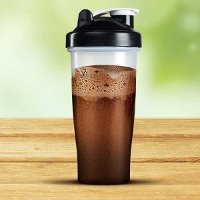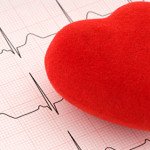Allergy, Environmental, and Orthomolecular Medicine
My previous experience with the utilization of ascorbic acid in the treatment of viral diseases led me to hypothesize that ascorbate would be of value in the treatment of AIDS (acquired immune deficiency syndrome). Preliminary clinical evidence is that massive doses of ascorbate (50-200 grams per 24 hours) can suppress the symptoms of the disease and can markedly reduce the tendency for secondary infections.
In combination with usual treatments for the secondary infections, large doses of ascorbate will often produce a clinical remission which shows every evidence of being prolonged if treatment is continued. This clinical remission is achieved despite continuing laboratory evidence of helper T-cell suppression. There may be a complete or partial destruction of the helper T-cells during an initial infection that does not necessitate a continuing toxicity from some source to maintain a permanent or prolonged helper T-cell suppression. However, it is possible ascorbate may prevent that destruction if used adequately during that prodrome period. Emphasis is put upon the recognition and treatment of the frequent intestinal parasites. Food and chemical sensitivities occur frequently in the AID syndrome and may aggravate symptoms considered to be part of the AID syndrome. A topical C-paste has been found very effective in the treatment of herpes simplex and, to a lesser extent, in the treatment of some Kaposi’s lesions. Increasingly, clinical research on other methods of treating AIDS is being “contaminated” by patients taking ascorbate.
Treatment of AIDS with Vitamin C
INTRODUCTION
I had previously described that the amount of ascorbic acid which can be tolerated orally by a patient without producing diarrhea, increases somewhat proportionately to the toxicity of his disease[1][2][3][4]. Among the roughly 80% of persons who tolerate ascorbic acid very well, -bowel tolerance- will be reached when in excess of 10 to 15 grams of ascorbic acid dissolved in water is taken in 4 to 6 divided doses per 24 hours. The astonishing finding was that when that same person is acutely ill with a mild cold, that tolerance may increase to approximately 50 grams per 24 hours. A severe cold can increase tolerance to 100 grams; an influenza, even up to 150 grams; and mononucleosis or viral pneumonias, to as much as 200 grams per 24 hours. These higher doses may have to be divided as frequently as hourly.
These large amounts of ascorbate are being drawn off the GI tract at a rate sufficient to prevent significant amounts from reaching the rectum and producing diarrhea. Measurements of ascorbate in urine, saliva, or serum indicate that if sufficient doses of ascorbate are not given when a patient is ill, the body level of vitamin C drops rapidly. In such a case, there is not enough vitamin C left in the body, particularly in the cells directly involved by the disease, to guarantee all the known housekeeping functions of the vitamin. Those functions known to be dependent on vitamin C, including several metabolic reactions necessary for proper functioning of the immune system, are put at risk of malfunctioning. I call this condition – acute induced scurvy.
PREMIERE FREE RADICAL SCAVENGER
The reason ascorbate ameliorates so many conditions is that it functions as the -premiere free radical scavenger[5]. This function is not because it is the most powerful free radical scavenger, but because it is possible to saturate every cell of the body with more molecules of ascorbate than any other free radical scavenger. The reason that it takes such massive doses for optimal effect is because high concentrations of ascorbate must be driven into the cells directly affected by the disease process sufficient to neutralize all of the free radicals produced by that process, and have some left over for vitamin C housekeeping functions. When a disease process involves free radicals, that disease process is capable of being ameliorated by massive doses of ascorbate. In the case of many infectious diseases, the relief from free radical suppression of the immune system, allows for more effective attack on the pathogen by that immune system.
Note: this premiere free radical scavenger function has little to do with nutrition but is a pharmacologic effect of ascorbate when utilized in unnatural amounts for humans.
Actually, the complete neutralization of free radicals requires several steps involving other substances, e.g. glutathione. However clinically, the most frequent limiting factor in the reduction of free radicals is ascorbate. In certain conditions such as chemical allergies, certain other limiting factors may become critically important, e.g. selenium and glutathione. Some have worried that a buildup of dehydroascorbate would be toxic in certain of these conditions. Clinically, this consideration has not created a problem when very large doses of ascorbate are used. Perhaps it is the high ratio of ascorbate to dehydroascorbate, I am careful to maintain in these patients, that protects against any temporarily accumulating dehydroascorbate. Further, I should like to point out that the dehydroascorbate formed should not be as toxic as that free radical the ascorbate reduces as it itself is oxidized into dehydroascorbate.
In a way, it is unfortunate that this free radical scavenger and vitamin C are the same substance. When ascorbate is destroyed in the process of destroying free radicals, the vitamin C stores, particularly in the cells directly involved in the disease process, are so depleted as to cause disorders of known housekeeping functions of vitamin C.
It is certain that AIDS causes this depletion. The sicker the patient is, the more ascorbate will be destroyed by the disease process. This depletion certainly contributes to the terminal events and probably plays a key role in the increased susceptibility of AIDS patients to various pathogens.
ASCORBATE VS. AN AIDS SUPPRESSOR FACTOR
A recent article describes the discovery of a -suppressor factor- in AIDS patients. This suppressor factor was found to be neutralized in the test tube by concentrations of ascorbate equivalent to that which would be achieved in a man who ingested 10 to 20 grams of ascorbate a day. It was thought that this amount was -“far too toxic”- to use in humans and that a less toxic antioxidant should be found[6].
Actually, 10 to 20 grams/24 hours of ascorbate is easily tolerated and is not toxic[1][2][3][4][7][8][9][10][11][12][13][14]. Unfortunately, clinically I have shown that the AIDS disease process destroys even larger amounts of ascorbate than the 10 to 20 grams because bowel tolerance is regularly increased to the range of from 40 to 185 grams of C per 24 hours in the patient who has moderate Kaposi’s lesions and/or moderate lymphadenopathy. -Therefore, the 10 to 20 gram equivalent of ascorbate in the test tube will not be adequate in vivo.
PRELIMINARY STUDY
Because of the hypothesis that AIDS patients would benefit from large doses of ascorbate, I began the actual treatment of AIDS patients and have found that ascorbate is indeed very valuable when used in conjunction with certain conventional treatments.
The following preliminary recommendations are based partly upon an anecdotal group of approximately 90 AIDS patients who sought medical care from physicians but who also took high doses of ascorbate on their own. Additionally, it is based upon 12 of my AIDS patients, 6 of whom were given intravenous ascorbate for a short period of time. Most of these patients have had considerable improvement in their condition. This improvement seems somewhat proportional to the amount of ascorbate taken by the patient relative to the severity of his disease. If the patient tolerates enough ascorbate to “neutralize the toxicity” of his disease and if the secondary infections are treated; his condition will go into remission. Subjectively, symptoms decrease and increase inversely with how closely the patient titrates to bowel tolerance.
The only death has been in a patient who had previously chemotherapy, interferon, and total body Xray therapy. Additionally, his veins were so destroyed by previous treatments that intravenous vitamin C therapy could not be continued under the existing circumstances.
Such a preliminary report of recommendations is justified only because of the urgency of the problem addressed and because in San Francisco and now New York, news of the ascorbate treatment is spreading rapidly. Ascorbate is being used by an increasing percentage of the AIDS patient population but without much guidance. There have been many requests by physicians for the treatment protocol.
ASCORBATE TREATMENT PROTOCOL FOR AIDS PATIENTS
The following protocol is recommended for AIDS and AIDS related conditions including lymphadenopathy, idiopathic thrombo- cytopenia purpura, and Pneumocystis carinii pneumonia.
As predicted, AIDS patients are usually capable of ingesting large doses of ascorbate. It is desirable that the amount of ascorbate taken orally be maximized. Patients are -titrated to bowel tolerance- (the amount that almost, but not quite, causes diarrhea). A -balanced ascorbate- mixture is utilized which is made up of a mixture of approximately 25% buffered ascorbate salts (calcium, magnesium, and potassium ascorbate) and 75% ascorbic acid. This mixture is dissolved in a small amount of water and taken at least every hour. The purpose of the frequent doses and this balanced mixture is to maximize the amount of ascorbate tolerated without producing diarrhea. Patients are permitted to vary the percentage of ascorbate salts to straight ascorbic acid according to taste. The usual amount tolerated initially is between 40 and 100 grams per 24 hours. -Doses in excess of 100 grams per 24 hours may be necessary with secondary bacterial and viral infections-. As the patient’s condition improves, bowel tolerance will decrease.
When intravenous ascorbate is found necessary because the toxicity of the condition exceeds the ability of the patient to take adequate amounts of ascorbate to scavenge all of the free radicals created by the primary AIDS infection and the various secondary infections, the following intravenous solutions should be utilized. Sodium ascorbate buffered to a pH 7.4 and without preservatives is added to sterile water in a concentration of 60 grams per 500 cc. This concentration is twice the concentration I have recommended before because it is well tolerated in young males with large veins. Patients with small veins may be best treated with solutions of 60 grams per liter. The time of the infusions should be over at least a 3 hour period, preferably longer. As much as daily administration of 3 bottles, 180 grams per 24 hours, may be necessary in acutely ill patients, e.g. Pneumocystis carinii pneumonia, disseminated herpes, disseminated cytomegalovirus, and atypical pneumonia. Enough ascorbate should be administered to detoxify the patient regardless of the amount needed. Additionally, oral doses of ascorbate should be taken simultaneously with the intravenous ascorbate. – Do not let the patients become lazy and discontinue bowel tolerance doses of ascorbate while the intravenous ascorbate is being administered -.
INTESTINAL PARASITES
If the AIDS patient has intestinal parasites, he must be treated for them. There is a very high percentage of male homosexuals infected with intestinal parasites. These intestinal parasites are themselves very immunosuppressive. The prognosis for an AIDS patient is greatly enhanced by proper treatment of these parasites. -Entamoeba histolytica-, especially, and -Giardia lamblia- must be treated. Intestinal parasites, ordinarily considered -non-pathogens-, should be treated. If negative, repeated stool examinations for ova and parasites should be taken if there is the slightest clinical sign of intestinal parasite infection. Samples should be fresh, not over 2 hours old. Laxatives may increase chances of discovering the parasites. Additional samples may have to be taken through a sigmoidoscope if other specimens are negative for ova and parasites. With treatment, Herxheimer’s reactions should be expected frequently. Symptoms, including Kaposi’s lesions, may be exacerbated, despite the ascorbate, during treatment for intestinal parasites.
CANDIDA ALBICANS
Candida should be sought and treated. It should be emphasized to patients that they owe it to themselves and society to treat the Candida consistently because of the possibility of breeding resistant strains. The possibility of candida in the gut, esophagus, mouth, sinuses, skin, etc. should be considered. In patients who clinically appear to have Candida but in whom Candida cannot be cultured, sensitivities to Candida should be suspected and treatment of especially the bowel should be considered. Herxheimer’s reactions, when antibiotics against Candida are employed, should be considered one indication that Candida is a problem. In these sensitive patients, foods and vitamins containing yeasts should be avoided. Lactobacillus in large amounts should be fed to these patients in an attempt to normalize bowel flora. Sugar and refined carbohydrates should be avoided because Candida thrives on them.
There is a high incidence of food and chemical sensitivities associated with Candida sensitivities[15][16][17] and Candida must be suspected whenever such sensitivities are discovered.
FOOD AND CHEMICAL SENSITIVITIES
Food and chemical sensitivities, both IgE mediated allergies and enzymatic deficiency allergies (EDAS), are common because of the disorders of the immune system and the severe stress imposed by the AID syndrome. This increased incidence of sensitivities may be associated with Candida, as discussed above, but may also be a result of the AIDS infection. Rashes, edema, phlebitis, etc. caused by corn, yeast (including yeast containing vitamins), molds, house gas, automobile exhaust, certain herbal formulas, cosmetics, formaldehyde, insecticides, paints, glues, and cigarette smoke have all been observed in my small group of patients. Conditions such as Kaposi’s lesions, lymphadenopathy and probably idiopathic thrombocytopenia purpura, conditions which would otherwise be considered just part of the AID syndrome or AIDS related, have been seen to be aggravated by food and chemical sensitivities. These sensitivities should be anticipated and offending substances should be removed from the patient’s diet and environment. Ascorbate may or may not block these sensitivities significantly; however, ascorbate may decrease the intensity and duration of the reaction in such a way as to make clinical discovery of the offending substance easier.
This increased incidence of food and chemical sensitivities is very important to understand because apparent adverse reactions to vitamin C may occur. These reactions are almost never due to the ascorbate itself. Most ascorbate is made from corn. Minute amounts of chemicals used in the manufacture of ascorbate may remain. Residuals of these substances are almost invariably the cause of the sensitivity reactions. Ascorbates made from sego palm or from tapioca and which presumably are manufactured with some different chemicals, are often tolerated. Different brands should be tried. It is almost always possible to find some ascorbate that is tolerated. This sensitivity problem is very important to deal with because patients frequently feel their life depends on taking adequate amounts of ascorbate and they may be correct in this feeling.
Many times gastrointestinal discomfort and excessive gas can be alleviated by changing to the sego palm ascorbate or changing brands of ascorbate.
OTHER CONSIDERATIONS
Bacterial infections should be treated with appropriate antibiotics but large amounts of lactobacillus should be administered with foods if there is the slightest tendency to Candida infections or sensitivities. Ascorbate administration should be intensified during treatment for bacterial infections. Intravenous ascorbate may be necessary.
Viral infections should be treated with intensification of the ascorbate treatment. Intravenous ascorbate may become necessary.
Immunosuppressive therapy should not be utilized.
Sugar and processed foods, foods with chemicals, recreational drugs, cigarettes, alcohol, etc. should be avoided. Obvious nutritional deficits should be sought and corrected. Additional supplimentation with especially zinc and selenium may be helpful.
All sharing of body fluids and fecal material should stop[18]. Repeated exposures, not only to possible AIDS infection, but to the secondary infections, especially intestinal parasites and Candida should be avoided.
HELPER/SUPPRESSOR CELL RATIO
With this protocol, it may be anticipated that a large percentage of patients will slowly go into an extended clinical remission. Patients must be on guard to sense any impending infection, colds, etc. The patient should begin the additional large frequent doses of ascorbate within minutes. At the dose levels that have been possible under circumstances imposed, a slow improvement of the total number of T-lymphocytes may occur but helper/suppressor cell ratios may remain suppressed. It appears that ascorbate may assist the immune system, but that in addition, there are mechanisms whereby ascorbate acts against pathogens, especially viruses and bacteria by mechanisms which do not depend on the T-cells. For this reason, I would suggest using the ascorbate portion of this protocol on children who have to be permanently isolated from the slightest exposure to infections (bubble babies).
MONITORING VALUE OF ASCORBATE “BURN”
Roughly to the degree that a patient clinically perceives himself to feel toxic (the amount of malaise, fever, pain, how swollen the lymph nodes, how much anxiety, etc.), the more ascorbic acid can be tolerated orally without it producing diarrhea. The amount tolerated becomes a rough measurement of something that represents the immediate toxicity of the condition. I use the expression “100 gram cold” to mean that at the peak of the cold a patient tolerated 100 grams per 24 hours of ascorbic acid without diarrhea. In cases where I am not sure what is causing an increased tolerance or if a person is multiply ill with several secondary infections, I refer to the processes going on which are using up the ascorbate as the “-burn-.” Note that the amount of ascorbic acid tolerated is only a good measure of this burn if it is the amount determined by titrating to “true” bowel tolerance, i.e., diarrhea caused by ascorbic acid in a patient who otherwise tolerates ascorbate well; not limits set by “too much gas”, “don’t like the taste”, “stomach too acid”, etc.
The amount of this burn has some practical and prognostic values; e.g., a patient with a burn much over 25-30 grams almost inevitably has something the matter with him and a thorough diagnostic workup is indicated. A lover of one of the AIDS patients had a burn of 100 grams. It was found that his helper/suppressor T-cell ratio was 0.7 but he had no other sign of disease. Over a 6 month period, the burn has dropped to 25 grams. AIDS has not been diagnosed in this patient but there is good reason to suspect that he has a pre-AIDS condition. The AIDS patient himself has had his burn drop from 125 grams to 35 grams. His lymphadenopathy has improved considerably.
AIDS POSSIBLY INVOLVING A PERMANENT OR PROLONGED LOSS OF T-HELPER CELLS
One patient who managed to eliminate all signs of Kaposi’s lesions while taking ascorbic acid had had his burn down to 15 grams a day for 6 months despite the helper/supressor T-cell ratio remaining at 0.2. There had been some slight increase in the absolute number of helper and suppressor cells. Previously detected shedding of CMV (cytomegalovirus) had apparently stopped. This patient had 3 Kaposi’s lesions (diagnosed as Kaposi’s sarcoma on biopsy) recur on the right foot following a cold, herpes simplex, and influenza, all within a 2 month period. The burn markedly increased, peaking at 185 grams per 24 hours. In 2 weeks time, the patient had managed to eliminate all signs of the lesions on the foot. The ascorbate burn slowly has lessened; now 2 months later, the burn is at 25 grams and decreasing.
This case, plus the previous two cases, strongly suggest that the basic AIDS infection, probably caused by a virus, is no longer active in these cases and that subsequent ascorbate burns and various later manifestations of the AID syndrome are caused by secondary and opportunistic infections. One is reminded of the permanent damage of certain viral infections in association with certain predisposing factors initiating an immune response to the beta cells of the islets of Langerhans and causing juvenile-onset diabetes[19].
ASCORBATE AND THE POSSIBLE PREVENTION OF AIDS
Morishige has demonstrated the effectiveness of ascorbate in preventing hepatitis B from blood transfusions[20]. A similarity exists between AIDS and hepatitis B. It has been my experience that patients treated with large doses of ascorbate during the acute phase of hepatitis will not develop chronic hepatitis. My experience with herpes simplex has been the same. Although ascorbate is helpful to a degree with chronic viral infections, it is in the treatment of acute viral diseases that it is most effective.
It is on this basis that I recommend that all persons who fear exposure to AIDS and certainly anyone receiving blood trans- fusions or other blood products which could in the most remote way have been obtained from an AIDS carrier, be put on bowel tolerance doses of ascorbate.
CONTROLLED STUDIES OF OTHER SUBSTANCES [may be] CONTAMINATED WITH ASCORBATE
As a result of publications in periodicals concerned about the AID syndrome[21][22], a rapidly increasing number of AIDS patients in the San Francisco Bay Area are taking large doses of ascorbate. The same practice is starting in New York and elsewhere. I would suggest that physicians conducting controlled experiments on interferon, and shortly with interleukin 2, be sensitive to the fact that their patients are, and will be con- taminating the experiments with massive doses of ascorbate. Statistical analysis of the results of such trials will probably be valueless. Ascorbate has been contaminating cancer treatment studies for some time as a result of orthomolecular literature[23][24][25]. I estimate that a significant increasing percentage of cancer patients in California and other parts of the world are taking massive doses of ascorbate. Most of these patients are hiding this fact from their oncologist.
BROADER PROBLEMS
The AID syndrome has not only become a major threat to the special groups ordinarily affected but threatens to spread at least to some extent into other groups. The increasingly large number of persons infected by the disease increases the possibility of mutations which could alter the routes of infection. Even without this possibility occurring, the large population of immune suppressed persons comprises a major health hazard because of the large pools of secondary infectious diseases generated. The large, growing pool of intestinal parasites, heretofore present in the western world in only small numbers, is one example of that problem.
POSSIBLE ELIMINATION OF THE AID SYNDROME
Practical considerations (lack of money and lack of hospital facilities) have prevented me from administering the doses of ascorbate which I think might -possibly- eliminate the probable viral infection initiating the AID syndrome. I suggest that the helper/suppressor T-cell ratios should be carefully monitored while at least 180 grams/24 hours of ascorbate is administered intravenously. At the same time bowel tolerance doses of ascorbate should be taken orally. This program should be followed over an extended period of time (minimum 2 weeks) to find out if there is any direct effect on the process causing the AIDS.
I have preliminary evidence in one patient in which the above program was tried that while the secondary problems were markedly suppressed by the ascorbate (7 lbs, 11 oz in 14 days) that the basic AIDS condition was not reversed. This case plus the cases implying the permanent or prolonged suppression of the immune system make it essential to treat the prodrome stages of AIDS with ascorbate.
If there is not a complete elimination of the basic AIDS process, bowel tolerance doses of ascorbate and the rest of the described protocol will probably have to be maintained for life.
My experience[1][2][3][4], and experience of other researchers[10][11][12][13][14][20][26][27] is that acute self limiting viral diseases can be reliably cured with massive doses of ascorbate. Viral diseases that have become chronic seem to involve pathologic processes which are not quite as susceptible to ascorbate but which nevertheless are ameliorated, sometimes seemingly cured. It is hoped that funds will be made available for such a project.
C-PASTE
Herpes simplex lesions can usually be made to more rapidly heal or be prevented at the outset by increasing the doses of oral ascorbic acid and the application of C-paste. C-paste is made with either ascorbic acid or sodium ascorbate and water applied directly to the skin and covered with a bandage. Frequently, one application will suffice for herpes. Care should be taken not to irritate intact skin too much in sensitive skin areas, especially under adhesive bandages. Frequently applications to intact skin where the patient perceives an outbreak is about to occur will completely abort the attack. Several applications may be necessary to penetrate through the intact skin.
C-paste has also been useful on early Kaposi’s lesions. It should be applied up to 4 times a day. Alternatively, soaks of 20% sodium ascorbate or ascorbic acid (1 gram per 5 cc of water) for 15-30 minutes, 4 times a day may be helpful. Be careful not to irritate the skin too much even with these solutions. Keep ascorbic acid out of the eyes; a 20% -sodium ascorbate- solution can be used in the eyes with care.
KAPOSI’S LESIONS
Kaposi’s lesions have been described as behaving like an infectious disease closely associated with CMV[28]. With ascorbate treatment, Kaposi’s lesions may be made to go away if the patient takes enough ascorbate and the patient is not burdened by multiple opportunistic infections. In patients with multiple problems, there tend to be outbreaks of the Kaposi’s lesions associated with colds, parasites, herpes, or emotional stress and particularly associated with a letdown in the amount of C taken. Even in patients with multiple lesions, individual lesions can frequently be seen to lose color and flatten with the local application of ascorbate soaks.
CONCLUSIONS
Ascorbate does ameliorate the AID syndrome to a significant degree. I want to emphsize, however, the absolute necessity of massive doses. Additionally, one must avoid and treat oppor- tunistic infections. Multiple infections, lack of understanding in the use of C, or inability to tolerate the doses prescribed, all result in a poor prognosis. The success of treatments with ascorbate entirely depends on consistent administration of C sufficient to neutralize the free radicals produced by the various diseases.
The use of ascorbate is increasing in the male homosexual population of the San Francisco Bay Area and spreading across the United States. It will be very interesting to see if there are any otherwise unexplained decreases in the rate of increase of new cases of AIDS and associated deaths starting in San Francisco. The use of C is contaminating otherwise thought to be controlled studies of other therapeutic measures. Other considerations plus the potential application of ascorbate as part of the treatment of all infectious diseases, makes the clarification of the usefulness of ascorbate to the medical profession essential.
CAUTION
If these oral solutions are used over a long period of time, care should be taken to keep them off the teeth by using a straw in order to avoid enamel damage. Sickle cell anemia and G-6-PD deficiencies should be ruled out where indicated. In any condition requiring prolonged administration of large amounts of any nutrient, I would advise seeking the advice of a specialist to avoid induced deficiencies in other nutrients.
References & External links
- Cathcart, R.F. Clinical trial of vitamin C. Letter to the Editor, Medical Tribune, June 25, 1975.
- Cathcart, R.F. The method of determining proper doses of vitamin C for the treatment of disease by titrating to bowel tolerance. J. Orthomolecular Psychiatry, 10:125-132, 1981.
- Cathcart, R.F. Vitamin C: titrating to bowel tolerance, anascorbemia, and acute induced scurvy. Medical Hypotheses, 7:1359-1376, 1981.
- Cathcart, R.F. C-vitaminbehandling till tarmintolerans vid infektioner och allergi. Biologisk Medicin, 3:6-8, 1983.
- Cathcart, R.F. Vitamin C function in AIDS. Current Opinion, Medical Tribune, July 13, 1983.
- Laurence J. The mystery factor that’s destroying immunity. American Health, May/June 1983.
- Stone, I. The Healing Factor: Vitamin C Against Disease. Grosset and Dunlap, New York, 1972.
- Pauling, L. Vitamin C and the Common Cold. W.H. Freeman and Company, San Francisco, 1970, Linus Pauling, Vitamin C and the common cold, Can Med Assoc J. 1971 Sep 4; 105(5): 448, 450. PMCID: PMC1931292.
- Pauling, L. Vitamin C, the Common Cold, and the Flu. W.H. Freeman and Company, San Francisco, 1976.
- Klenner FR. Virus pneumonia and its treatment with vitamin C. J. South. Med. and Surg., 110:60-63, 1948
- Klenner FR. The treatment of poliomyelitis and other virus diseases with vitamin C. J. South. Med. and Surg., 111:210-214, 1949.
- Klenner, F.R. Massive doses of vitamin C and the virus diseases. J. South. Med. and Surg., 113:101-107, 1951.
- Klenner, F.R. Observations on the dose and administration of ascorbic acid when employed beyond the range of a vitamin in human pathology. J. App. Nutr., 23:61-88, 1971.
- Kalokerinos, A. Every Second Child. Keats Publishing, Inc., New Canaan, 1981.
- Truss, C.O. Tissue injury induced by Candida Albicans: Mental and neurologic manifestations. J. Orthomolecular Psychiatry, 7,1:17-37, 1978.
- Truss, C.O. Restoration of immunologic competence to Candida Albicans. J. Orthomolecular Psychiatry. 9,4:287-301, 1980.
- Truss, C.O. The role of Candida Albicans in human illness. J. Orthomolecular Psychiatry, 10,4:228-238, 1981.
- Mavligit, G.M., Talpaz, M., Hsia, F.T., Wong, W., Lichtiger, B., Mansell, W.A., Mumford, D.M. Chronic Immune stimulation by sperm alloantigens. JAMA, 251:237-241, 1984.
- Notkins, A.L. The Causes of Diabetes. Scientific American, 241,5:62-73, Nov. 1979.
- Murata, A. Virucidal activity of vitamin C: Vitamin C for the prevention and treatment of viral diseases. Proceedings of the First Intersectional Congress of Microbiological societies, Science Council of Japan, 3:432-42, 1975.
- Cathcart, R.F. Vitamin C function in AIDS. Bay Area Reporter, p.18, Nov 17, 1983.
- Cathcart, R.F. Vitamin C treatment protocol for AIDS, Bay Area Reporter, p.14-15, Jan 5, 1984.
- Cameron, E. and Pauling, L. Supplemental ascorbate in the supportive treatment of cancer: Prolongation of survival times in terminal human cancer. Proc. Natl. Acad. Sci. USA, 73:3685-3689, 1976.
- Cameron, E. and Pauling, L. The orthomolecular treatment of cancer: Reevaluation of prolongation of survival times in terminal human cancer. Proc. Natl. Acad. Sci. USA, 75:4538-4542, 1978.
- Cameron, E. and Pauling, L. Cancer and Vitamin C. The Linus Pauling Institute for Science and Medicine, Menlo Park, 1979.
- Belfield, W.O., Vitamin C in treatment of canine and feline distemper complex. Veterinary Medicine/Small Animal Clinician, pp. 345-48, Apr 1967.
- Belfield, W.O. and Zucker, M. How to Have a Healthier Dog. Doubleday & Company, Inc., New York, 1981.
- Siegal, F.P. and Siegal, M. AIDS:The Medical Mystery. Grove Press, Inc., New York, 1983.
The original text taken from a:
![]() http://www.ncbi.nlm.nih.gov/pubmed/6238227
http://www.ncbi.nlm.nih.gov/pubmed/6238227
Medical Hypotheses, 14(4):423-433, Aug 1984











Comments
“Vitamin C in the treatment of acquired immune deficiency syndrome (AIDS)”